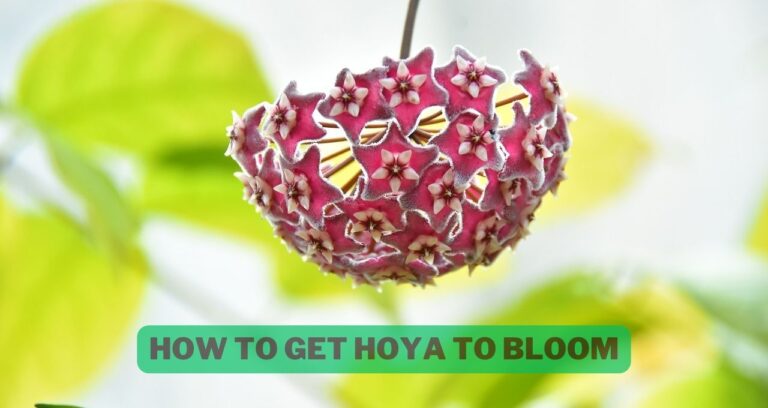How To Grow Vegetables Indoors Without Sunlight: Top Tips
Today, we find ourselves confined to limited areas and get very limited sunlight. It is challenging to grow vegetables. So whether it’s possible to grow vegetables without Sunlight and also in a container.
Well, it’s possible.
Growing vegetables indoors without sunlight is Not only a fun and rewarding hobby. We will cover all essential aspects related to how to grow vegetables indoors without sunlight.
Growing vegetables indoors offers numerous benefits. such as having fresh produce at your fingertips, controlling the growing environment, and ensuring a steady supply of nutritious food. While sunlight is crucial for photosynthesis, you can successfully cultivate vegetables indoors with proper planning and care.
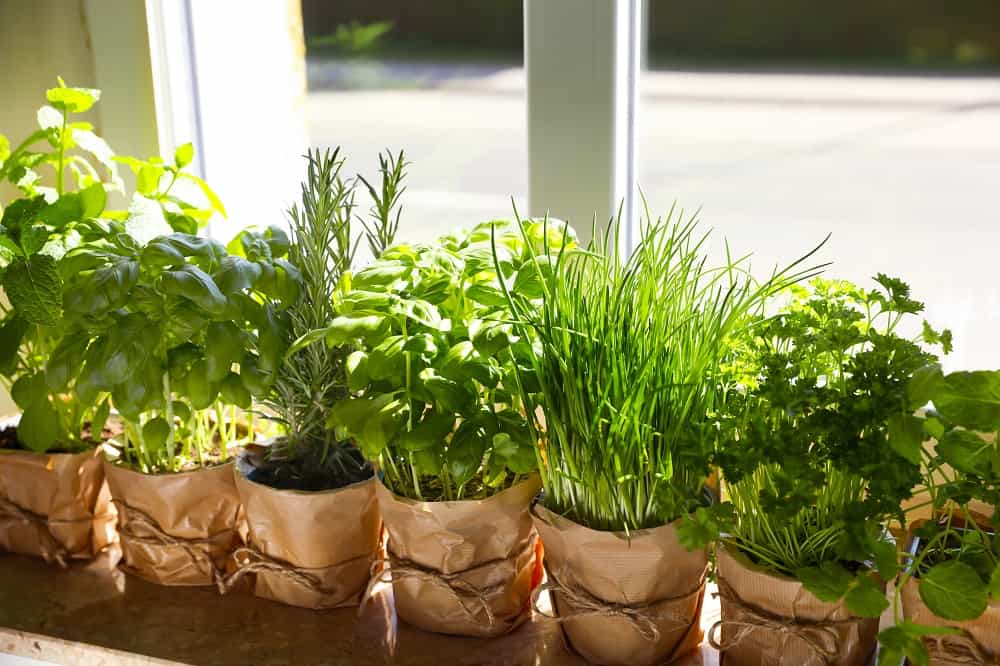
How to Grow Vegetables Indoors Without Sunlight
To successfully harvest vegetables indoors without sunlight, it is important to have a good understanding and beginner knowledge of gardening. Here are some top tips to get you started on how to grow vegetables indoors without sunlight.
1. Choosing the Right Vegetables
Indoor vegetable gardening requires carefully selecting vegetables that can thrive in low-light conditions. Some suitable leafy greens like spinach and kale or herbs like basil, cilantro, thyme, and parsley.
Small vegetables like salad greens, radishes, chard, and arugula are also perfect. Root vegetables like pole beans and broccoli with short growth cycles also grow well.
2. Selecting the Ideal Location
Choosing the right location is also important for success. As you grow vegetables indoors, natural light is very limited. Even so, choose an area with indirect sunlight for at least 6 to 8 hours daily.
South-facing windows are generally the best option. But east and west-facing windows can also provide enough light. Some plants can live on a windowsill. But to get the best results, you must use artificial lighting to grow
3. Soil and Container Selection

Growing vegetables indoors requires the use of proper soil and containers. Use a light potting mix or a well-draining soil rich in nutrients. Select containers that have suitable drainage holes. Additionally, the size of the containers is also important. Ensuring sufficient room for the plants to expand and form a robust root system.
You can also opt for vertical gardens or hydroponic systems if you have limited space. Leafy greens thrive in shallow containers, but root vegetables need deeper ones.
4. Selecting the Right Grow Lights
Since sunlight is not available indoors, supplemental lighting is essential. Adequate lighting compensates for the lack of sunlight. it provides the necessary light spectrum for plant growth. Use artificial light to supplement sunlight. LED is cost-effective and energy-efficient.
To select the right grow light setup, consider the size of your space. Likewise, consider the kinds of plants you’re growing and your budget. Choose the grow light with the right coverage and brightness for your plants to maximize their potential. Also, Adjusting the height of your LED light and the time it is on is essential.
5. Adding Humidity to Your Indoor Garden
Keeping your indoor garden at the appropriate temperature and humidity is important. Most vegetables thrive best at temperatures ranging from 60 to 75 ℉ (15 to 24 ° C).
Ideal humidity levels are between 40% to 60%. Use a humidifier or position a water tray nearby to improve the humidity around your plants.
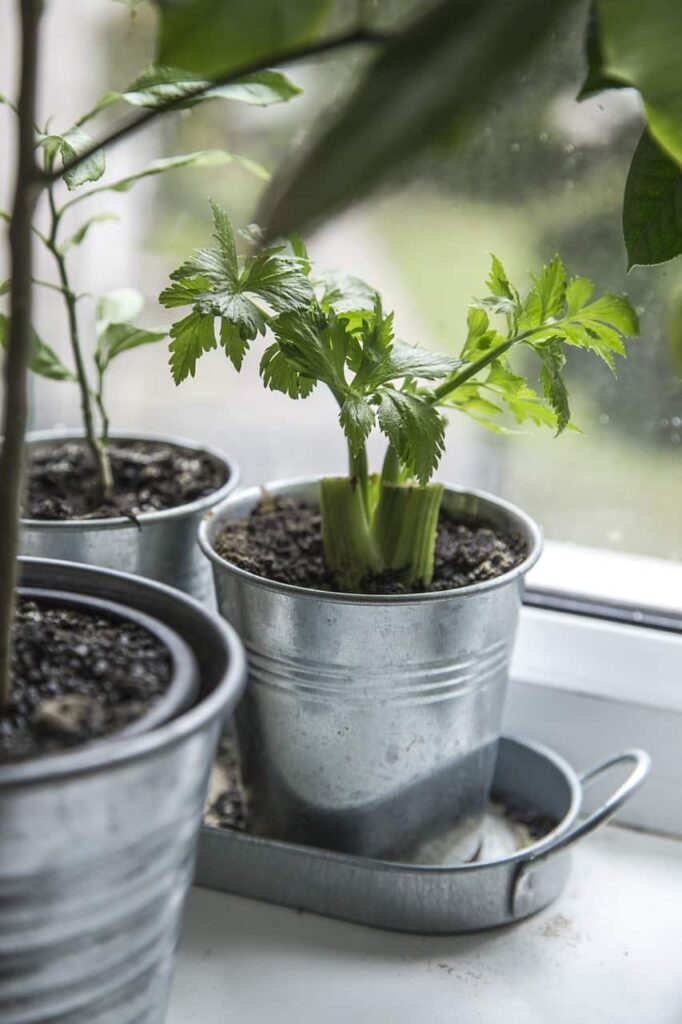
6. Using Fertilizers
Since indoor gardening environments are limited. It is essential to use suitable fertilizers to feed the required nutrients for its growth. Compost and worm castings are excellent organic nutrients for your plants. You can also use liquid fertilizers formulated for indoor plants.
7. Proper Watering Techniques
Proper watering Techniques are essential in indoor vegetable gardening. To avoid issues like root rot and other moisture-related problems.
Maintaining a proper watering schedule is important. Using a soil moisture meter to understand your soil moisture level before watering is the best idea.
8. Pest Control Measures
Indoor gardens are not immune to pests like aphids or spider mites. To prevent infestations, keep your indoor garden clean and free of debris. Neem oil and insecticide soap can be used to get rid of pests or to keep them away. Check your plants for any signs of harmful insects or other organisms, and take immediate action if you find any.
9. Air circulation
Proper air circulation is important for your indoor garden. Mold and other types of fungi may start growing when airflow is limited. At the same time, good air movement helps plants absorb carbon dioxide and prevent pests. Use a small fan or open a nearby window or door to let in more air. This can also help regulate your indoor garden’s temperature and humidity levels.
Read More:- Natural Fertilizer: Is Lemon Water Good For Plants?
Step-by-Step Guide to Indoor Vegetable Gardening
Starting Seedlings Indoors: The first step is to start seedlings. First, select the seeds of the vegetables you wish to grow, and ensure they are high quality. Plant the seeds in the potting soil and Keep the container warm and bright under grow lights or near a window.
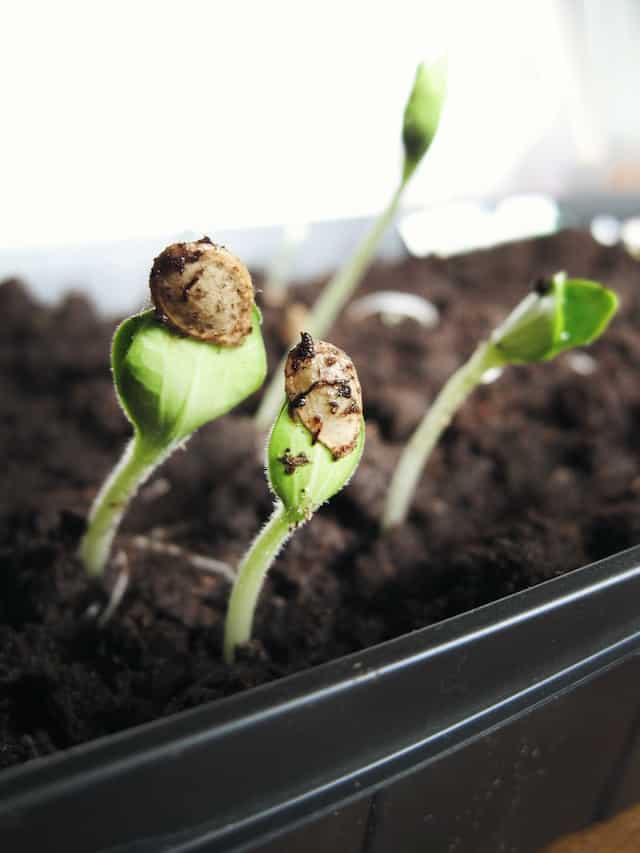
Planting Your Vegetables in Containers: When your seedlings have matured and are prepared for transplantation. Select suitable containers based on the size of the plants. Fill the containers with top-notch potting soil, ensuring ample room for root growth.
Ensuring Adequate Light and Temperature:- Natural sunlight isn’t available indoors. Provide enough artificial light for your vegetables to grow.
Use full-spectrum LED grow lights above your plants for at least 12-16 hours daily. The ideal temperature for indoor houseplants is 60-75°F (15-24°C). Make sure you can keep this temperature to avoid plant stress.
Watering and Nutrient Needs:- Water your plants carefully. Don’t overwater them, as this can lead to root rot. Use a moisture meter to understand the soil moisture Before providing water. Provide nutrients through organic fertilizers or hydroponic supplements.
Harvesting Your Vegetables:- When your vegetables are ready for harvest. Cut them off with sharp, clean scissors or pruning shears. Be sure to pick your vegetables regularly, promoting continued growth and preventing spoilage.
Read More: –Expert Advice What To Spray On Pumpkins For Bugs: Bug-Free Pumpkins
10 Best Vegetables to Grow Indoors Without Sunlight
Here are 10 vegetables to grow indoors without sunlight:
1. Leafy Vegetables
Spinach, lettuce, kale, and Swiss chard are ideal indoor Vegetable options without natural light. They are known for lower light tolerance and for providing fresh, nutritious greens. The time they mature from seed to harvest depends on the particular variety and the environment. Here are some general guidelines for popular leafy greens:
- Spinach: Spinach takes 40 to 50 days from seed to harvest. But baby spinach leaves can be harvested within 25 to 30 days.
- Lettuce: Leaf lettuce varieties can be harvested as early as 30 days from planting while heading lettuce varieties may take 55 to 70 days. Harvest individual leaves or the whole head, depending on your preference.
- Kale: Kale is a cool-season crop that takes approximately 55 to 75 days from seed to harvest.
- Swiss Chard: Swiss chard takes 50 to 60 days from seed to harvest. You can harvest individual outer leaves when they reach a desirable size or cut the entire plant a few inches above the soil level.
2. Microgreens
Microgreens are another excellent option for indoor. as they need minimal space and light to grow. They can be grown in small containers and harvested in a few weeks. Microgreens, including varieties like broccoli, radish, and arugula. They can be grown in trays or shallow containers with artificial lighting.
Here are some common microgreens and their approximate seed-to-harvest times:
- Broccoli: Broccoli microgreens typically take 7 to 10 days to reach harvest size.
- Radish: Depending on the variety, they can be ready to harvest within 6 to 8 weeks. Look for the emergence of the first true leaves before harvesting.
- Arugula: it takes approximately 7 to 14 days to harvest.
3. Herbs
Herbs like mint, parsley, basil, cilantro, and chives can be grown indoors without sunlight. They add fresh flavors to your dishes and thrive in containers near bright, indirect light sources or under grow lights.
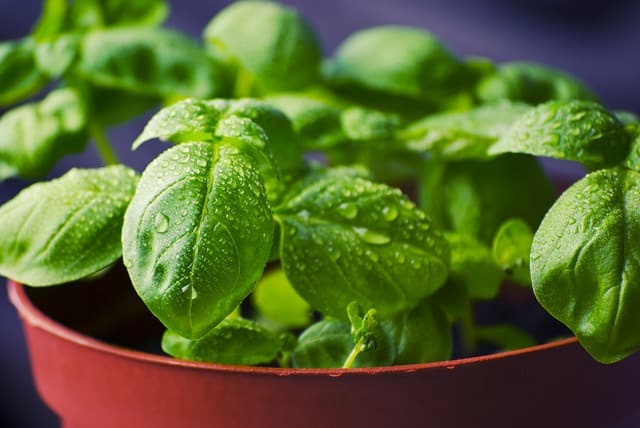
- Basil: Basil is a popular culinary herb known for its vibrant flavor. It takes 60–90 days to mature
- Parsley: Parsley is a biennial herb with flat or curly leaves. It takes 70–90 days to mature.
- Cilantro/Coriander: The leaves of cilantro can be gathered approximately 30 to 50 days after planting the seeds. Coriander seeds, produced after the plant flowers, take longer to mature, usually around 100 days.
- Mint: Mint starts harvesting once the plant leaves have reached a mature size, which can take around 90 days or more.
4. Mushrooms
Mushrooms are unique vegetables that don’t need sunlight to grow. Instead, they thrive in dark, cool environments. Oyster mushrooms and shiitake mushrooms are popular choices for indoor cultivation.
You can grow them in specialized kits or using mushroom spores and a substrate like straw or sawdust. They can grow and be ready for harvest within 4 -8 weeks. It varies depending on the specific mushroom species.
5. Radishes
Root vegetables like radishes can be grown indoors. They have a short growing cycle and harvest within a few weeks. After planting the seeds, radishes can be picked anywhere from 20 to 30 days later.
6. Carrots
It is also possible to grow carrots indoors. But, they need more space due to their root development. Choose shorter varieties of carrots that are better suited for container gardening. Be sure that the depth of the containers is enough to support the plant’s eventual root development.
Carrots require 60–80 days to mature from seed. Nonetheless, certain early-maturing or smaller types may be harvested in 50 days. Larger varieties may take up to 90 days.
7. Scallions
Scallions, or green or spring onions, can grow indoors without sunlight. They can be regrown from the discarded roots of store-bought scallions or started from seeds. After planting, scallions mature for around 60–70 days.
8. Peppers
Peppers can also be grown indoors without sunlight. They need a warm environment and regular watering. Choose a smaller variety of pepper, like jalapeño or cherry peppers, for container gardening. They can take around 90-120 days to mature from seed and produce fruits.
9. Spinach Beet
Spinach beet, also known as perpetual spinach or leaf beet. It is a leafy green vegetable resembling spinach. It takes around 60 days to achieve full maturity. Yet, this can vary depending on the growing conditions and variety.
10. Tomatoes
Tomatoes are another vegetable that can be grown indoors. Dwarf or compact tomato varieties are ideal for container gardening as they have a smaller root system. Provide enough artificial light and maintain consistent temperatures for optimal growth. Tomatoes mature around 60–80 days.
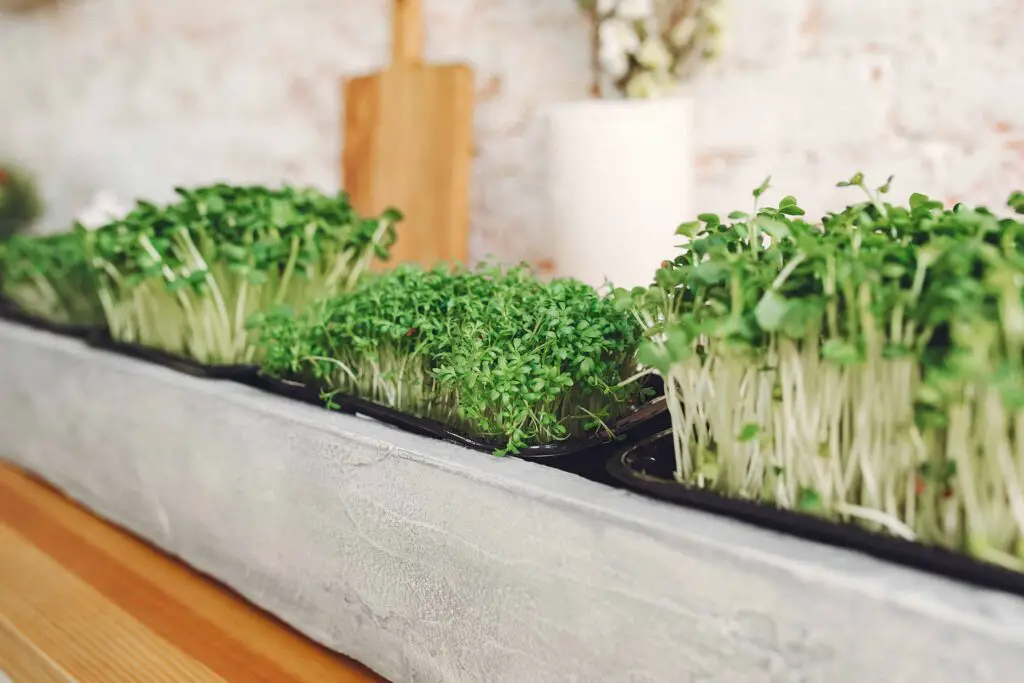
Read More:- Rooting Crepe Myrtle In Water: A Simple Guide For Successful Propagation
The Best Light Sources for Indoor Vegetable Gardening: LED vs. Fluorescent
You need the right lights for the best results when growing vegetables indoors without sunlight. People who like to grow plants indoors often use LED and electric lights.
LEDs use less energy and produce less heat. An added advantage is a wider range of light wavelengths available on LEDs that can be customized according to your plant’s light requirements.
To successfully set up an indoor vegetable garden with LED Lights, invest in high-quality bulbs and use proper timers to provide enough light exposure.
What is the best indoor garden for growing vegetables?
An LED grow-a-light garden is the best indoor garden for growing vegetables without sunlight. This type of garden provides the necessary light spectrum for plant growth and can be adjusted to different stages of growth. Additionally, it is energy-efficient and easy to use.
Conclusion
For gardeners Growing Indoor vegetables not only supplies your food veggies, but you also get organic products. In this article, we discuss how to grow vegetables indoors without sunlight. As you understand, with a little care and the knowledge we share, you can build a successful indoor garden.
Source:- https://www.thespruce.com/how-to-grow-vegetables-indoors-1403183






